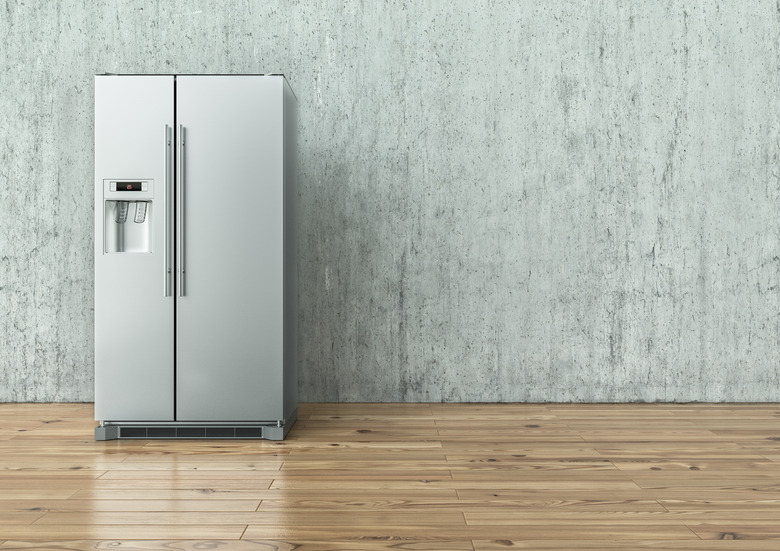Kenmore Elite Refrigerator Troubleshoot
Kenmore, Sears' appliance brand, has been around for over 100 years. The company is known for putting out quality, affordable appliances, such as dishwashers, washing machines, dryers and refrigerators. Although Kenmore refrigerators are reasonably reliable, the products will have issues occasionally. But most of these problems can be fixed by the appliance owner easily.
Refrigerator or Freezer Not Cool Enough
Refrigerator or Freezer Not Cool Enough
When the refrigerator and freezer are not cooling, first check if the machine is plugged in and powered on. Then, check the temperature controls to see if they are set properly. Next, verify the machine has not been set on demo mode, which stores use to keep the lights and display on without wasting electricity on cooling. To turn off demo mode, check the manual for your specific model. Also, ensure the device is not being used somewhere too warm as these refrigerators cannot work properly in temperatures above 110 degrees Fahrenheit.
If these solutions don't work, consider whether the machine has had enough time to cool off. If the refrigerator was recently plugged in, if the doors were left open for an excessive period of time, if the temperature controls were recently changed, if the defrost cycle just ran or if a large quantity of food was recently added, the device might just need time to cool off again. It can take up to 24 hours for a refrigerator to cool completely from room temperature and up to half an hour to cool completely after a defrost cycle.
When the refrigerator is warm and the freezer is cold, check that the vents running from the freezer to the refrigerator are not blocked. You may also want to check that the refrigerator is not too full as this blocks the air from circulating properly.
If you find that none of these solutions correct your temperature problem, you may need to contact a professional as there may be an internal problem with the refrigerator.
Moisture Inside or Under the Refrigerator
Moisture Inside or Under the Refrigerator
A small amount of moisture is normal in a refrigerator. If your refrigerator, particularly the defrost drain pan, is excessively wet, it could be that the doors have been left open, that the room it has been stored in is too humid or that the defrost cycle recently completed. In these cases, wipe up the moisture with a towel and ensure the doors are fully closed.
If the defrost pan overflows, possibly resulting in water collecting under the crisper drawer or under the exterior of the refrigerator, it could be blocked by debris or ice. If the drain looks frozen over, you can try to defrost the drain with a hair dryer or by pouring a small amount of warm water in it. If this does not solve the problem, the tube or defrost pan may need to be replaced by a professional.
If the water is dripping from the back of the refrigerator or under the crisper drawer but the defrost drain pan is not blocked up, a leaking inlet valve or water system tubing could be the reason. These will also need to be replaced by a professional.
Icemaker or Water Dispenser Problems
Icemaker or Water Dispenser Problems
If your icemaker is not producing enough ice, you could need more ice than your machine is able to produce, which is approximately 100 cubes in a day. Your freezer may also be too warm to produce ice properly, usually because the door has not been closed completely, the machine was only plugged in recently or the freezer temperature is set too low. Alternatively, the water hose may not be connected in the back properly, the hose may be kinked or you may not have enough water pressure in your home. To solve these problems, you can check the hose connection and ensure there are no kinks, but you may need to hire a plumber to increase your water pressure.
On the other hand, if the machine is not making ice at all, it could be due to the reasons above or because the icemaker is not turned on, the ice-detecting sensor is obstructed or the icemaker shutoff arm is obstructed. If fixing these problems doesn't correct the issue, your icemaker could be broken and may require a professional repair.
When the refrigerator is not dispensing any ice, it could be because the doors are not closed properly, the dispenser chute is blocked, the dispenser display panel is locked or because there is no ice in the machine. If none of these problems caused the issue, you may need a professional to come and repair the dispenser motor.
References
- Sears Parts Direct: Model 79572053110 Kenmore Elite Bottom-Mount Refrigerator – Manuals and Guides
- Scribd: Kenmore Elite Side by Side Refrigerator 106.5118
- Manuals Lib: Kenmore 795.7977 Use And Care Manual
- Sears Parts Direct: DIY Refrigerator Repair
- Repair Clinic: Kenmore Refrigerator Troubleshooting & Repair Help
